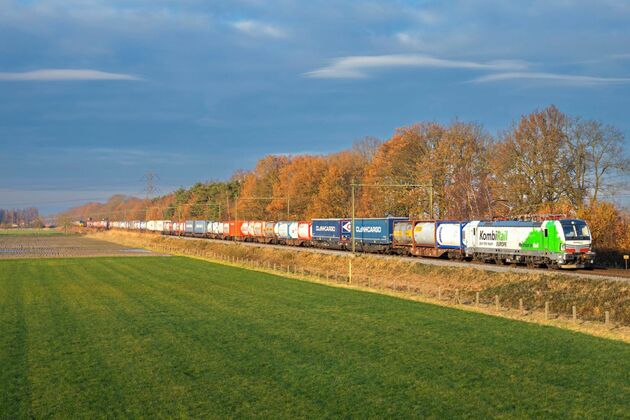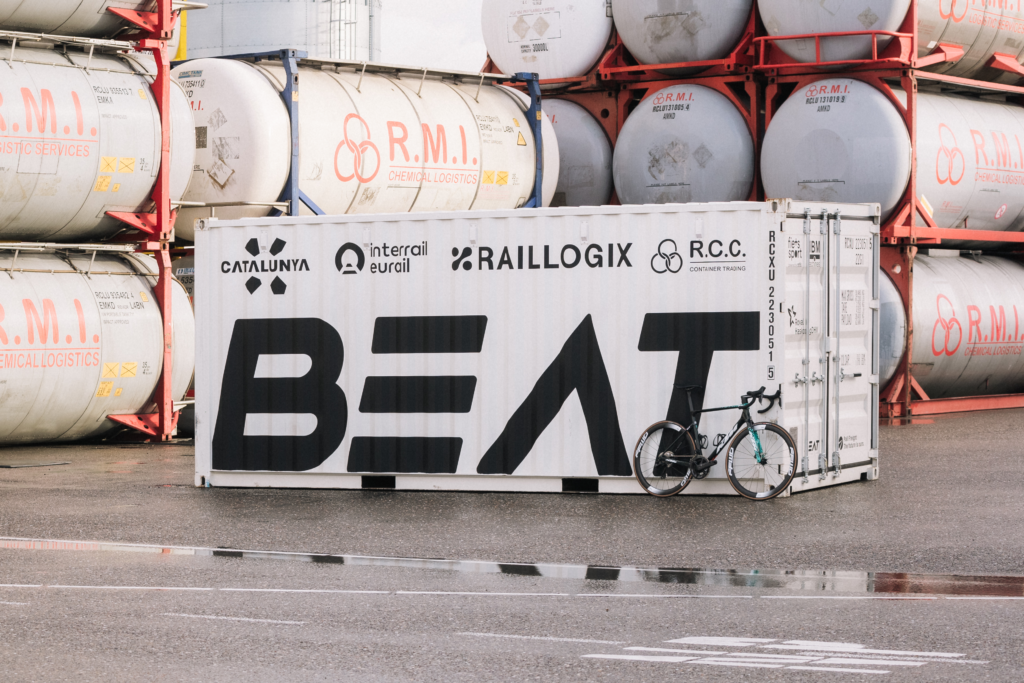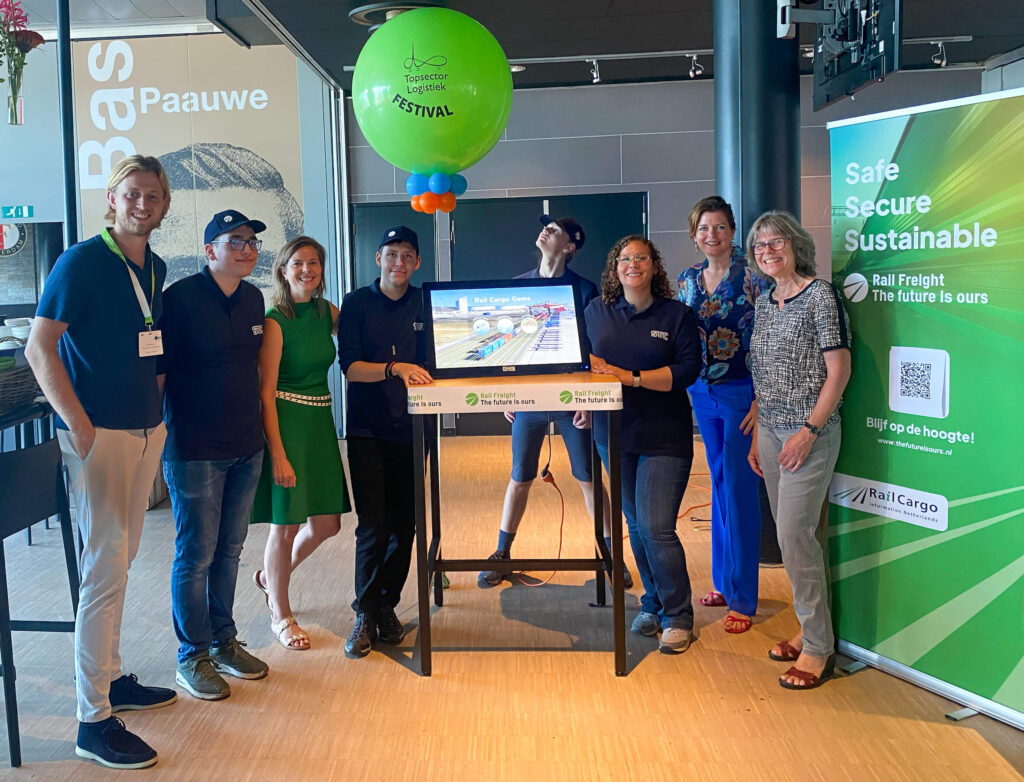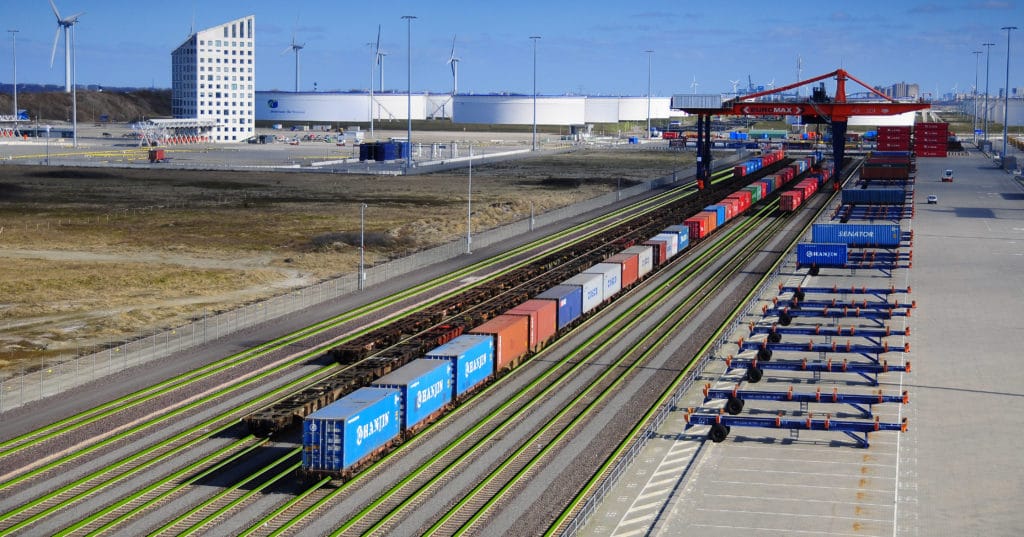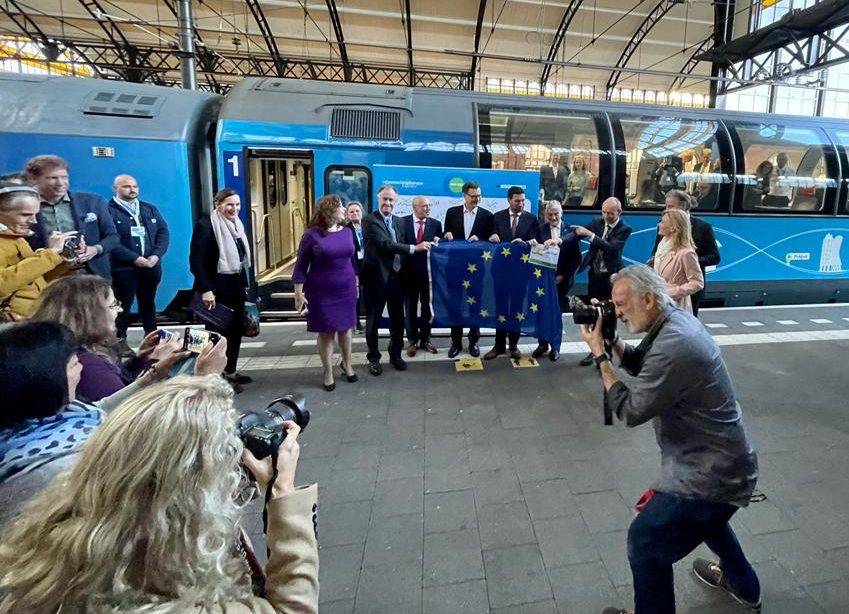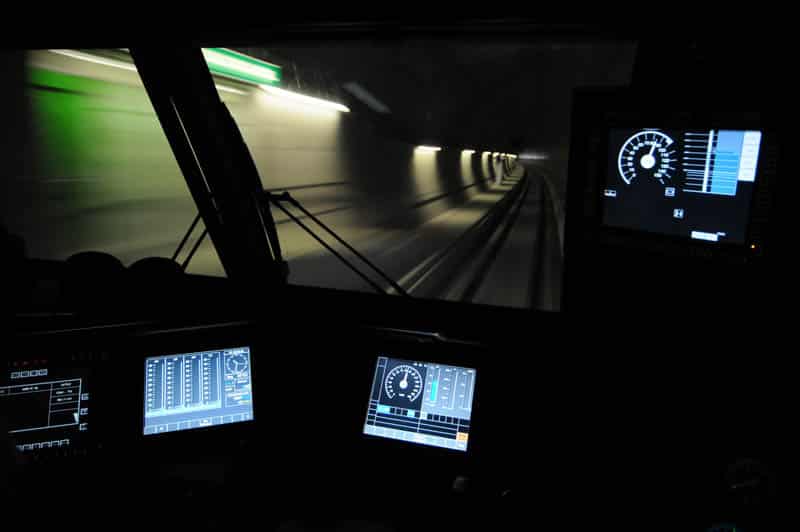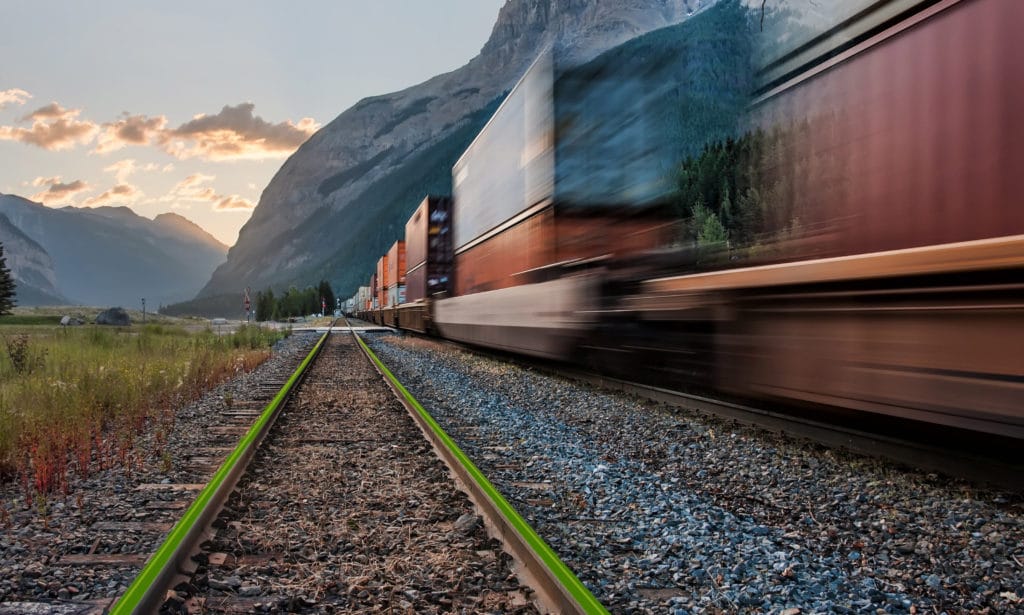The Connecting Europe Express covered 20,000 kilometers last month, crisscrossing Europe. On October 4, the train covered the Amsterdam-Brussels route. The topic of discussion? The Dutch challenges of freight transport in a European context.
Text: Marco Barneveld
In the first half of the nineteenth century, the first tracks were laid throughout Europe. Around the same time, the idea of a European Union germinated. In 1849, at the International Peace Congress in Paris, writer Victor Hugo gave a passionate plea for the United States of Europe’. A thought that, incidentally, was labeled absurd and unfeasible.
But not everything that seems absurd and unfeasible is. European unification may be a fact. Unification, as far as the European railroads are concerned, still has some way to go.
Infrastructure, capacity, cross-border connections, missing links, data sharing, affordability, signaling, high-speed, regional connections, track widths, freight terminals, rolling highways, last-mile connections, innovation, digitization, 740-meter trains. Keywords, each representing a piece of the puzzle of the rail system in Europe.
Puzzel
A puzzle that is starting to receive more and more attention within the EU. In recent years, both users and the rail industry have strongly urged to improve rail services in Europe. These requests have been well taken up by the EU institutions, not least because of climate concerns.
Transport is a vital sector within the EU, but one that is responsible for 25% of the EU’s total CO2 emissions. Within that 25%, rail transport is responsible for just 0.4% of the greenhouse gas emissions of the entire EU transport sector. It is also the only mode of transport that has consistently reduced its emissions and energy consumption between 1990-2017. (Source: Europa.eu)
The most sustainable mode of transport

Three different trains
We found a motley crew of politicians, MEPs, EU policymakers,  and representatives of railroad companies and infrastructure managers onboard the train. A lively discussion took place in the conference carriage.
and representatives of railroad companies and infrastructure managers onboard the train. A lively discussion took place in the conference carriage.
Connection to ports
“What are we waiting for? What are the plans,” asked Kristian Schmidt, director of land transport at DG MOVE. “The Netherlands has one of the most congested rail networks. Better use must be made of the existing network, but there must also be more rail lines for rail freight.”
“Connections to the ports are a very good example of how the network can be improved,” says Herald Ruijters, responsible for investment, innovation, and sustainable transport at DG MOVE. “Not only with the major ports but also to the smaller ports.”
Topman Ferdinand van den Oever of Port of Moerdijk could only confirm this. “We try to position ourselves between the two giants Rotterdam and Antwerp. In doing so, rail freight connections in combination with short sea connections are essential for survival. This transport model is the future. In doing so, I speak for a port that is heavily dependent on rail.”
“It would be interesting to find solutions to combine maritime and continental cargo,” adds Wando Boevé, Top Sector Logistics.
For example, it would be very useful to know the destination of cargo goods before they arrive at the port and to have a data exchange system that allows all parties involved to organize redistribution efficiently.
Most recent articles
Kombiverkehr KG launches new Rotterdam RSC – Köln-Eifeltor v.v. service
BEAT Cycling Club, the First Team to Travel by Train to Training Camp in Girona
TMA Logistics is launching a train shuttle service operating between the ports of Rotterdam and Amsterdam.
Intermodal transport
“The Netherlands has a clear advantage with its ports,” Schmidt said. “That is why I hope that intermodal transport will be at the center of Dutch transport policy. The Dutch are experts in logistics and can combine road, rail, and maritime.”
The European unification of railroads will increase rail efficiency. The fact that drivers now have to be switched at every border would be a thing of the past. Arno van Deursen of Lineas endorsed this: “Eventually it should become as easy to travel through Europe by train as it is by truck.”
Steven Lak, head of the Rail Freight Table, said the main challenge is to get people to act on the plans that everyone has. “People tend to stay in their own boxes rather than working together. In addition, it’s a challenge to find consensus when there are so many people and parties involved. But sometimes you don’t need consensus; you need a push.”
The EU could provide that push. It would help the unification of the European railroad.
Poll
Poll 2: are being overtaken by other modalities
Stay informed?
Subscribe to the newsletter
Contact us
Do you have questions about the initiative Rail Freight, The Future is Ours? Would you like to become an ambassador? Or are you considering transporting goods by rail? Then please contact us. Leave a message with your details and we will contact you within 2 working days.

